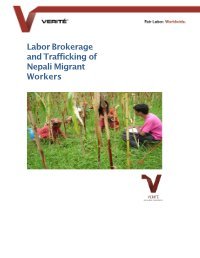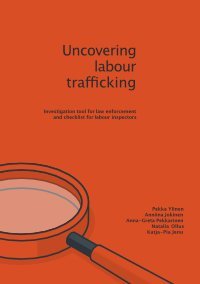By Kelle Barrick, Rebecca Pfeffer, Stephen Tueller, Michael Bradshaw, Natasha Aranguren, Kyle Vincent
To advance knowledge about promising methods for estimating the prevalence of human trafficking in the United States, the Administration for Children and Families’ Office of Planning, Research, and Evaluation (OPRE) and the Office on Trafficking in Persons (OTIP) funded a study, conducted by RTI International, to field test two methods of prevalence estimation within one industry in one geographic location in the United States.
This study, conducted between 2020 and 2024, measured the prevalence of labor trafficking within the construction industry in Houston, Texas, using both time-location sampling (TLS) and link-tracing sampling (LTS). TLS involves developing a sampling frame of venues, days, and times where the population of focus congregates and using a random selection procedure (e.g., every fifth person) to select a representative sample of the population. LTS is a network sampling approach that relies on study participants to recruit their peers to participate in the study.
Central to decisions among policymakers, funders, and researchers concerned with addressing human trafficking is the question of the size of the problem. Understandably, these groups seek evidence about the prevalence of human trafficking to guide choices around policies and interventions to prevent and address human trafficking in communities. Several empirical efforts have been established in recent years in response to this quandary, including a series of seven studies included in the Prevalence Reduction Innovation Forum (PRIF) initiative (Center on Human Trafficking Research & Outreach, n.d.), which aims to build evidence about methodologies to estimate the prevalence of human trafficking by testing various estimation methods in various industries in six other countries. In each of these seven studies, two estimation strategies are used to estimate the prevalence of human trafficking among a certain population in a certain area. This dual estimation approach offers insight about both (1) the logistics and feasibility of carrying out each estimation strategy and (2) how the prevalence estimates that they generate compare to one another. The current study was designed as a domestic counterpart to the seven international PRIF studies. Following a comprehensive review of prior human trafficking prevalence studies (see Barrick & Pfeffer, 2021) and a consideration of factors such as industries of identified interest and feasibility of estimation strategies, we chose to focus this study on the prevalence of labor trafficking within the construction industry in Houston, Texas, using both time-location sampling (TLS) and link-tracing sampling (LTS). TLS involves developing a sampling frame of venues, days, and times where the population of focus congregates and using a random selection procedure (e.g., every fifth person) to select a representative sample of the population. LTS is a network sampling approach that relies on study participants to recruit their peers to participate in the study. The objectives of the study were to advance knowledge of promising methods for estimating human trafficking prevalence and to better understand substantive issues around the experiences of construction workers with labor trafficking and other labor exploitation.
Study Findings The LTS sample did not yield a high response rate, and we only include high-level findings from this sample in this report . Even with financial incentive, workers were hesitant to refer their peers to participate in this study, and relatively few referral chains developed. Given the limited number of chains available for analysis and the potential for misleading findings, LTS sample findings are only presented to highlight differences in prevalence estimation strategies. More than one in five construction workers had experienced labor trafficking victimization in their lifetime . Among the TLS sample (n = 903), 22.3% had experienced labor trafficking in construction in their lifetime, 13.2% had experienced labor trafficking within the past 2 years, and 4.2% had experienced or were experiencing labor trafficking in their current job. An additional 42% of construction workers reported experiencing other labor abuses that did not meet the threshold of labor trafficking . Just over one third (35%) of workers had never experienced any labor trafficking or exploitation in the construction industry. Although individual characteristics were assessed as potential risk and protective factors, no significant differences emerged . Given the limited extant research focusing on risk and protective factors for experiencing labor trafficking or other labor abuse in construction, additional work is needed to substantiate the lack of significant findings regarding individual characteristics. Construction work related to natural disaster recovery and reconstruction is associated with a higher prevalence of labor trafficking and other forms of labor abuse . Construction workers who had worked in natural disaster recovery and reconstruction settings were significantly more likely than those who had not to have experienced labor trafficking or other labor abuse. Conclusions and Implications Labor trafficking and other labor abuse in the construction industry are common. About two-thirds of Houston construction workers experienced at least one form of exploitative or abusive labor practice. The types of abuse most frequently experienced by construction workers include working without a contract, deception about working and living conditions, working long and unusual hours without adequate compensation, and paying recruitment fees to get a job. However, nontrivial percentages of construction workers were subjected to more serious forms of abuse, including having their pay withheld, deception about the work they would be doing, and being subjected to emotional or psychological abuse. These findings have implications for policymakers, law enforcement, Departments of Labor and other regulatory agencies, construction unions, workers’ advocacy groups, and anyone concerned about workplace exploitation in the construction industry. Related to prevalence estimation methodologies, we confirmed that data collection and prevalence estimation strategies matter. Although both TLS and LTS are promising approaches for identifying and recruiting construction workers, only TLS proved to be effective in reaching the population. All prevalence estimation research should clearly highlight challenges that occurred during data collection that may impact the validity of the findings and exercise caution in reporting potentially misleading estimates.
Washington, DC: Office of Planning, Research, and Evaluation, Administration for Children and Families, U.S. Department of Health and Human Services. 2024. 51p.














